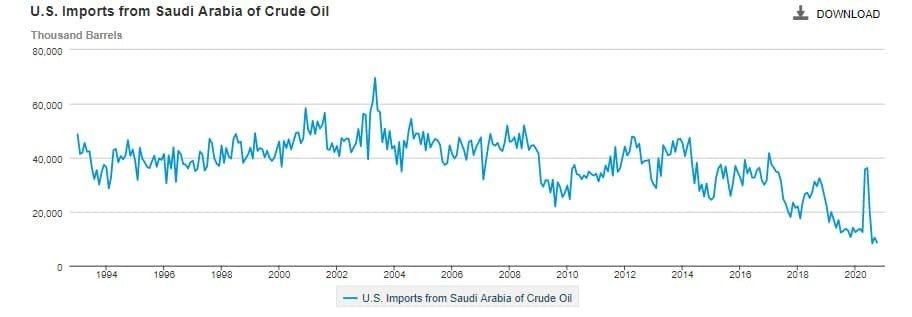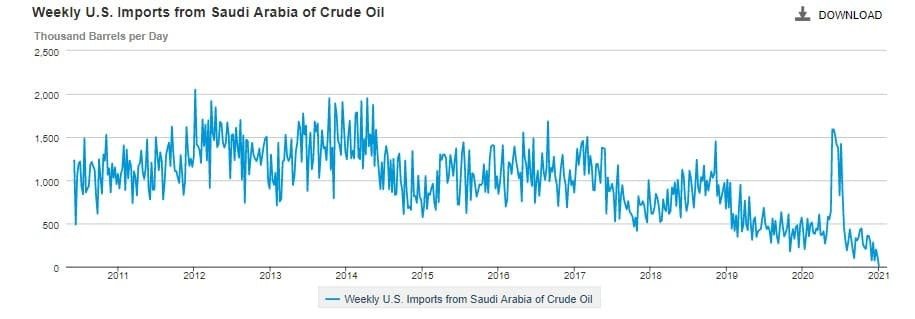Crude oil flow from Saudi Arabia to US falls to ZERO

For the first time in 35 years, no oil flowed from Saudi Arabia to the United States last week, according to EIA data, in a show that the US — at least for now — isn’t as reliant on oil from the Middle East like it used to be.
In October, according to the EIA, the United States imported 8.544 million barrels. In June, that figure was more than 36 million, although that figure was a bit of an anomaly as Saudi Arabia threatened to flood the US market with crude oil.
In much of the early 2000s, the United States imported more than 45 million barrels of Saudi crude oil on a monthly basis.

On a weekly basis, that figure has now fallen to zero.

And the US imports of crude oil are not just falling from Saudi Arabia. Through October, the United States imported significantly less crude oil from the Persian Gulf region.
In the early 2000s, the United States was importing more than 3 million barrels of crude oil per day from the Persian Gulf region. In October 2020, the United States imported less than a half a million barrels per day — and that figure isn’t an anomaly, it’s a clear trend. The United States is relying less and less on foreign oil, and particularly less and less on oil from the Persian Gulf.

The data comes just as Saudi Arabia announced a voluntary million-barrel-per-day cut to its oil production as the OPEC+ group sat down to the negotiating table to hatch a plan to react to the oil market and the lack of demand.
It also comes on the same day that Saudi Arabia announced a crude oil price increase for the United States for February by $0Mor.20 per barrel.
This article was originally published on Oilprice.com














